— Fred Guttenberg (@fred_guttenberg) May 29, 2022
Art: Drawing practice (for paint cravings)
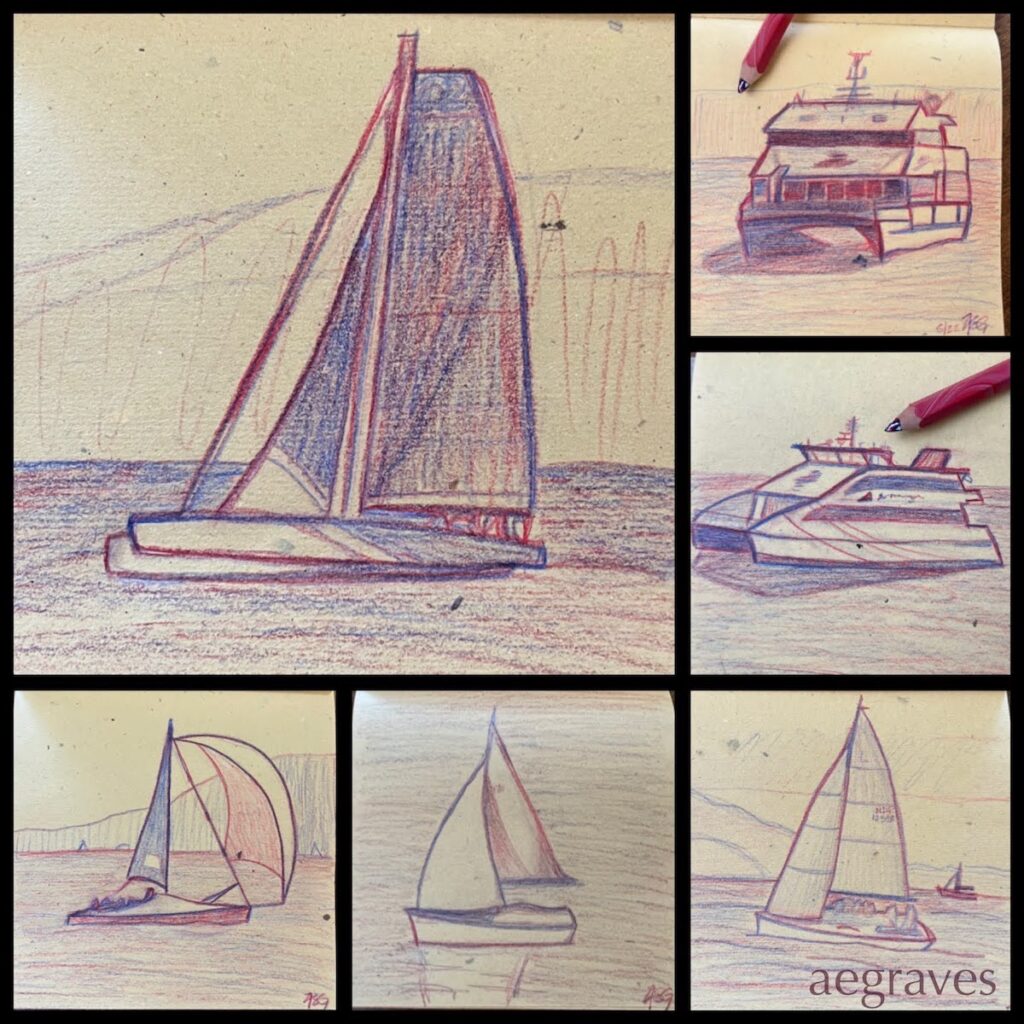
I AM DRAWING – BY HAND! ON PAPER! It has been a while since I’ve done this… I drew often in childhood, and regularly sketched for architecture school in my late teens and early 20s, but after leaving architecture professionally, I stopped drawing regularly. Drawing is slow and thoughtful, and I have too often struggled with long hours and demanding work – drawing felt like something I didn’t have time for. Photography, especially once I started carrying a small camera in my purse, was more accessible – and FASTER. Drawing fell by the wayside, a cost of my non-creative profession.
I never gave up drawing entirely: I still enjoy drawing in flurries, especially when I want to really take my time to enjoy studying things. I’ll take a new sketchbook to a museum, sketch sculptures for a day or two, and then set it aside until the mood strikes again.
I’m drawing again this month, because I’ve been suffering from paint lust. In my fantasies, I’m about to make a series of really great gouache representational paintings, and I’ll need to lay out some great drawings and buy some gouache to make this happen. This is an outrageous fantasy: I have been making primarily abstract (non-representational) drawings and paintings since 2012, so I am out of practice in representational (representing the shape of real world things) drawing. Plus, I have never been IN practice with gouache: I have just one, small notebook with abstract or patterned gouache multimedia sketches.
This fantasy is grandiose, and so I’m putting conditions on it, such as: I can’t buy gouache until I make a representational gouache painting with my existing little set of 5 colors FIRST.
And I can’t make a representational painting without a drawing to guide me, and so this is why the sketches at the top of the page exist. I need the practice. Badly. This is a fun prerequisite, even if I am clumsy and using a museum-gift-shop pencil with multiple leads.
*
There is more to this plan: I can’t just buy any paint, because gouache paintings are delicate (there is no natural seal against moisture, abrasion, or UV light, like traditionally varnished oils or acrylics have), and I insist on using permanent, artist-grade paints. Gouache has often been used for commercial art with a short lifespan, and so many colorful gouaches aren’t made with stable, long-lasting pigments.
I’ve done my research, ruled out familiar brands with unstable pigments, and have a surprise choice in mind (German!?!), but… I don’t want to write about that until I’m actually painting with that product. So, hopefully I’ll get some more drawings in, and knock out at least one cheerful little painting before money flies out of my wallet for this.
Books: The Love Bunglers by Jaime Hernandez

The Love Bunglers
by Jaime Hernandez
published by Fantagraphics, Seattle, Washington
2014
Oh, this book hit me hard.
This book centers on Maggie, one of the heroines of the Love and Rockets Locas stories, and the hardships – and relationships – that shaped her and her family from childhood through middle age. With her family eager to suppress the truth – about infidelity, abuse, divorce, and painful separations from partners, siblings, and friends – traumas play out in slow motion over many years, but are not fully healed.
In her later years, Maggie may have a chance to (re)connect with the people she loves, before they are truly gone.
This is a well executed, well drawn, well told story. While I’ve seen elements/chapters of this in other collections, there is new material here as well, and the way it is all combined creates a profile of Maggie’s relationships that packs a great emotional punch.
I recommend reading ALL of the Locas stories first, to understand more of Maggie’s life and the relationships (shown here in chapter-length flashbacks) for the greatest impact – and because the Locas stories are GREAT! (Disclosure: I cried at the end of Locas volume 1, so I’m invested in the characters. No, I’m not telling you why I cried.)
I love this – and highly recommend it to all Maggie (and Love and Rockets) fans.
Coffee: Ethiopian Fancy from Peet’s as a Pour Over
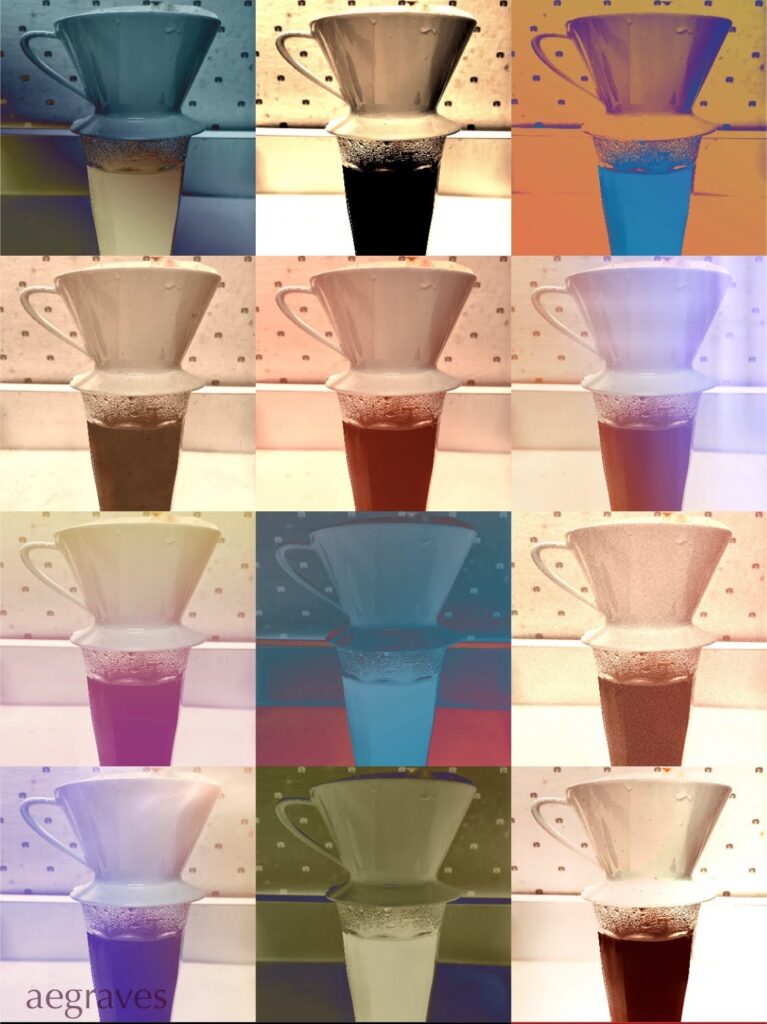
Coffee fans fall into camps, and I’m both an espresso drinker (a special fan of almond milk lattes) and a French press coffee devotee.
I rarely drink pour-over coffee. I’ve had it in various places, and… just haven’t been impressed. It was okay, but it reinforced my fondness for the additional flavor that soaking in a French press brings out in the beans.
My friend C brought me the gift of Peet’s Ethiopian Fancy (peets.com) recently, which is a favorite of mine – but he brought it over ground. FINELY ground. It was automatic: he makes Italian Roast as pour-over, and this is his usual grind, though it is too fine for my French press. I made it in the French press anyway, and it was good, but also different, and I didn’t like having sediment in my cup afterward.
So, I caved and bought a pour-over device from another local coffee place, plus filters to fit, so I wouldn’t have to waste any of this finely ground coffee.
And… my first attempts at pour over were really GOOD. Yes, the coffee is different from my French press version with these same beans (though ground more coarsely, and with the oils still in the brew rather than on a paper filter). But still richly flavorful. And fast to make!
I’m not giving up the French press, but I like this additional option – and I LOVE Ethiopian Fancy this way.
Language: Still Studying
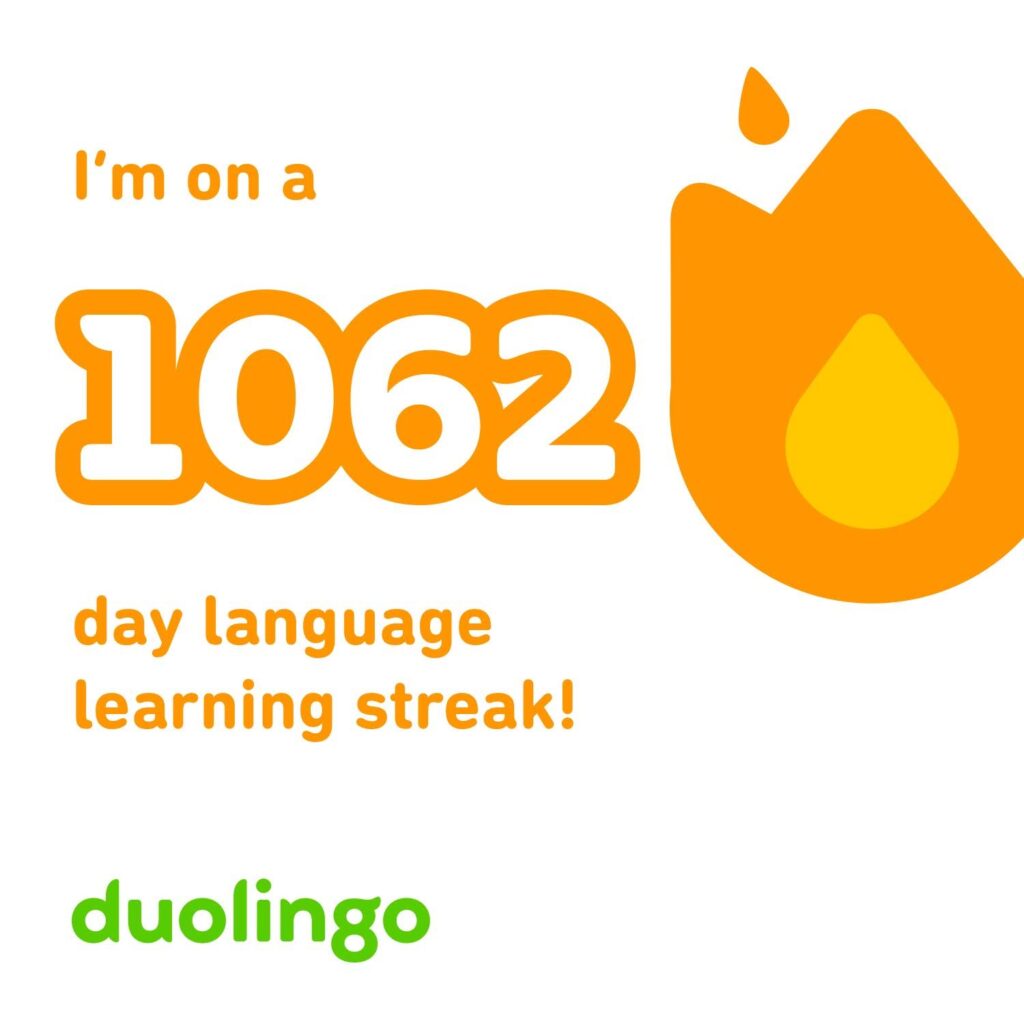
Even I am surprised at my persistence!
I’m still studying Japanese, but my lack of kanji memorization is slowing me down, and I haven’t been making the flash cards from my notes to get to the level I need to be at. But I’m not giving up, either…
Book: Moon of the Crusted Snow by Waubgeshig Rice

Moon of the Crusted Snow
by Waubgeshig Rice
book and audiobook published by ECW Press
audiobook read by Billy Merasty
2018
This novel is a slow, intense burn – and the audiobook is narrated in an impressively CANADIAN manner!
Evan and his family have a comfortable, modest life on a small Anishinaabe (First Nations) reservation, where he works for the community government in a range of jobs that are enough to keep his spouse and two children warm and fed through brutal Canadian winters. He enjoys hunting to keep his extended family fed through the winter, and he and his wife both enjoy meeting with elders to learn more about the old ways, which their community has partly abandoned in favor of modern trappings that arrived with reliable electricity.
When the power goes out, it disrupts the community’s school and local businesses, but is sure to come back soon.
Then the landlines stop working. Which is exotic.
Then the satellite phones and radios go silent as well. For a community displaced to this isolated reservation a few generations ago, who are accustomed to keeping to themselves, there aren’t any obvious places to go for information that aren’t a great distance away.
And then, refugees begin to arrive from the nearest non-native town, where some sort of societal collapse is underway… It occurs to Evan that the power may not be coming back on again for a very long while, if ever. And, that some members of his community aren’t interested in doing the work required to survive without imported foods and fuels…
The story builds tension throughout, with soft moments of Evan’s children learning Anishinaabemowin words from the elders in between fights breaking out over emergency supplies, armed standoffs, premature deaths, and the realization that a community really shows its character during a crisis…
Actor Billy Merasty’s intense Canadian-ness adds something special to the narration. The sort of chill, slow-paced ‘how are your folks doing’ dialog while tensions mount contributes to the surreal nature of the crisis: these are ordinary people living ordinary lives until the crisis hits, and they maintain their normal pace in a realistic manner. (No one suddenly becomes a super-efficient action-movie-hero! ) His reading of the Anishinaabemowin dialog, and the way that local words mingle with Canadian English so naturally in inter-generational conversations, reminds me of inter-generational, multi-lingual conversations here – they are well written and well performed. (Merasty is a First Nations actor and author himself, though from a different group than the author.)
This is a well-written, compact, increasingly stressful book to read – stressful in a good way. I’m glad I read it!
Pandemic: US Surpassed One Million Deaths this month
That’s the official number, and it is known to be an undercount.

There are a range of excess-death resources online, including a CDC dedicated Excess Death page associated with the pandemic, which notes other causes of death that increased beyond those associated directly with COVID-19 infections, because people couldn’t access care to address other serious health concerns.
The US President ordered flags flown at half staff earlier this month, which is a memorial tradition here, but it doesn’t feel like enough. We have more mourning and memorializing to do.
With new COVID variants in circulation, and cases still popping up weekly at my workplace, the pandemic still isn’t OVER.
The impact of all of these deaths, plus the infrequently spoken of impact of long-term COVID disabling so many people, is still not well understood. It feels like it touches everything in the developed world in some way, but how people and organizations manage is up to them. Which… creates some concerns.
It is an unfortunate milestone.
Zoonosis remains in the news in other areas outside of the COVID pandemic. New outbreaks of avian flu are causing destruction of captive agricultural birds, with a confirmed domestic (US) case of transmission to humans; there is an unusual monkeypox outbreak being tracked; and porcine cytomegalovirus may have contributed to the death of the patient who received a pig’s heart, even though there should have been no way the unwilling, genetically engineered donor pig should have had the infection. (How many times have I read that there is no reason to worry about xeno-transplants, and yet…)
Coffee: Addictive Coffee
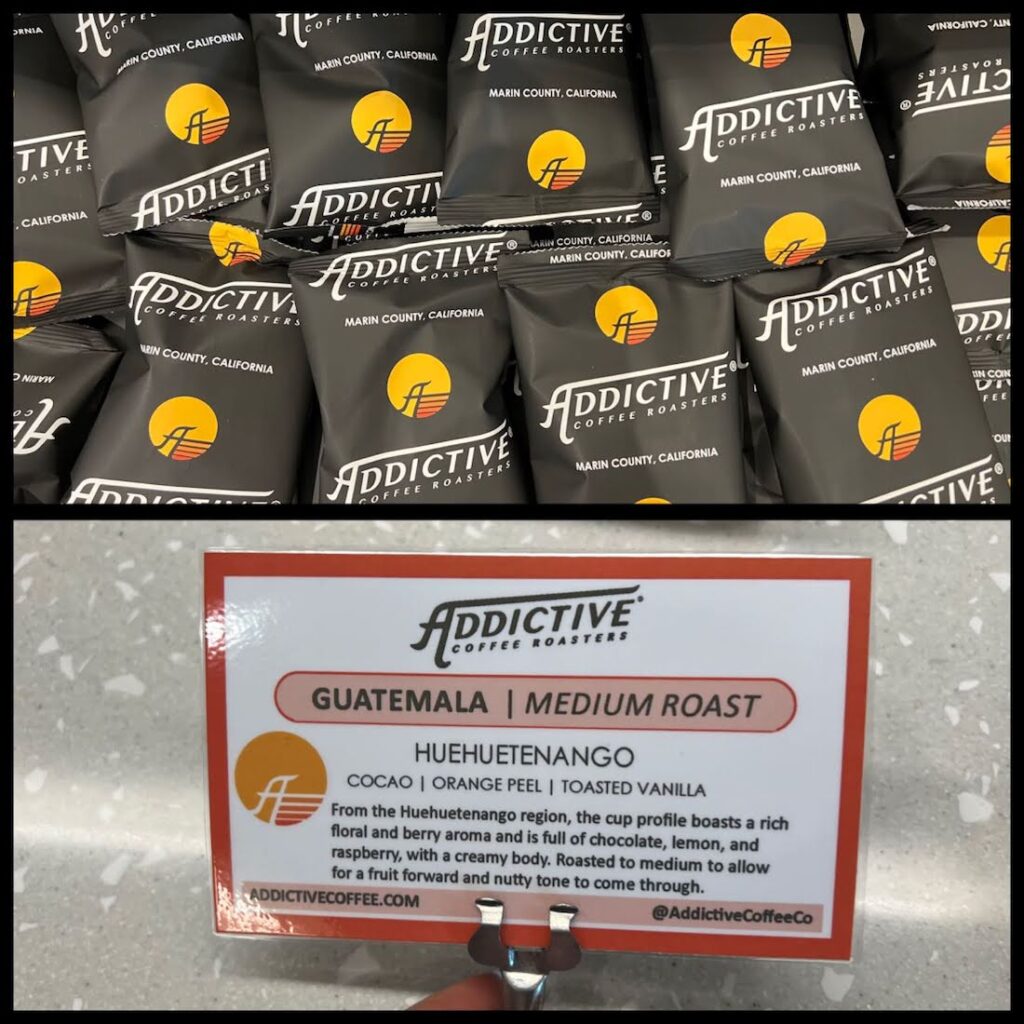
I realize that the books to coffee ratio on this site has been skewed in favor of books, so I will try to catch up a bit!
My employer recently moved into a new building, and the new building came with new coffees to enjoy, in the enormous, stainless steel drip-coffee brewers that fill the pump dispensers in countless food service establishments.
Delightfully, the coffee on my floor is from Addictive Coffee Roasters in Marin, California (addictivecoffee.com/). Their single-origin medium roast is Huehuetenango, a delicious coffee that brews well in our machines, and delivers a deep, dark, flavorful cup. The tasting notes (cocoa, orange peel, vanilla) are on point!
I drink it black, with sugar, and sometimes with a splash of almond milk. It’s good stuff, as I can tell by my increased consumption over the prior supplier’s beans, and I’m thrilled we have it.
Book: Less by Andrew Sean Greer
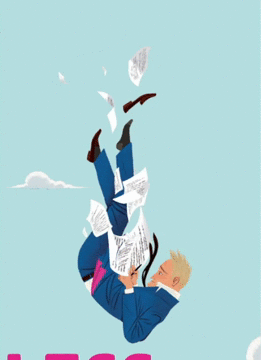
Less
by Andrew Sean Greer
published by Little, Brown, and Company
audiobook published by Hachette Audio
narrated by Robert Petkoff
2017
This novel won the Pulitzer Prize!
Arthur Less is a 49-year old man living in San Francisco, trying to get his new novel published, dreading age 50, and trying to accept that his young partner moved out and moved on. When an invitation arrives to that young ex-partner’s forthcoming wedding (!!), he decides to flee rather than face it.
Piles of previously ignored invitations to be a guest lecturer, a conference speaker, a writer’s retreat participant, and more suddenly find their purpose – helping him avoid humiliation!
His escape out of SF and around the world does more than just help him avoid his feelings about ‘the one that got away:’ it nearly gets him killed, sparks new feelings, introduces new friends, offers insights about his life that he’d rather not have, has him offering to kill students trying to sign up for his classes, and gets him to his 50th birthday in a series of both sweet and absurd misadventures.
The excellent reading by Petkoff had me laughing out loud. Especially the portions translated from German, which Less believes he speaks fluently, to hilarious effect. Also: the general observation from a character that perhaps books about middle-aged white guys feeling sorry for themselves aren’t appealing. HAHAHAHA!
This is a fun, charming, novel about trying with all ones might NOT to see one’s life imitating art.
Book: Blue Territory: a Meditation on the Life and art of Joan Mitchell by Robin Lippincott

Blue Territory: a Meditation on the Life and art of Joan Mitchell
by Robin Lippincott
published by Tidal Press
2015
This is an artist’s biography, but not a traditional one. It does a great job of describing the life of Joan Mitchell, the abstract expressionist painter who spent many of her later years working in Paris while showing in the U.S.
Rather than a list of facts and documents, this biography reads like an oral history, told by a friend who was a big fan of Mitchell’s, who is sharing quotes and interpretations of pivotal phases of Mitchell’s life. It’s fluid, like fiction, as if Lippincott was walking down Paris streets with her and is remembering the mood and the color of the light in between snippets of paraphrased conversation and quotes from interviews.
It isn’t the biography I expected: it was more fun, like having a biography interpreted by a poetic friend.
